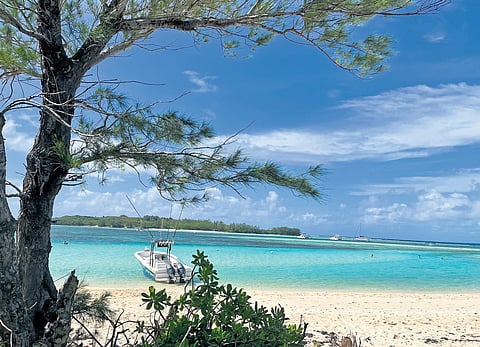

Unexplored and pristine with powdery white beaches and knee-deep emerald waters, Flat Island is a nature reserve of 253 hectares and volcanic in origin. It is one of the biggest northern islands on the fringes of the east-African nation of Mauritius, which in itself is just a speck in the Indian Ocean.
Many Indian travellers are oblivious that they are retracing a historical journey on their trip to Flat Island unless they set foot inside the Aapravasi Ghat, the now-restored remaining section of an erstwhile immigration depot. “The indentured labourers brought in from India were quarantined on the northern islands of Mauritius,” says Meenakshi, one of the guides at the Aapravasi Ghat, a UNESCO Heritage Site.
Aapravasi Ghat is located on the bay of Trou Fanfaron in Mauritius’ capital of Port Louis. It’s the place of landing of close to half a million Indians as early as 1829, who had signed a contract agreement with employers, in pursuit of land just a little way off from northern India, but were instead sent on a long arduous sea journey.
The individuals who survived the voyage from India landed here at the immigration depot in Marich Desh, as Mauritius was then addressed by the contractors who brought in the labourers. These labourers were termed ‘indentured’— a glossy term for cheap labour coined by who else but the British, as against ‘slaves’ just after the abolition of slavery. The period between the 1830s and early 1900s is known as the ‘Age of Indentured’.
The indentured labourers upon landing in Mauritius, then embarked on a flight of 16 steps in pursuit of better prospects at the now Aapravasi Ghat, only to be cooped in with thousands of others in space-constrained barracks, with deplorable sanitary facilities for filing in the immigration procedures.
The immigration procedures were then followed by a medical examination, when the ones suspected of cholera, malaria and other communicable diseases were sent into quarantine to Flat Island, which was delegated as a quarantine station, locally known as a lazaretto.
At the lazaretto, the indentured Indian labourers were joined by their counterparts from China and Africa. With abysmal facilities and dismal living conditions, many perished in the first few months of their arrival. Those who survived went to work on the many sugarcane estates run by the colonists in mainland Mauritius for a pittance. Thus, much of the prosperity of Mauritius has been a labour of sweat and blood of these migrants and their descendants, especially Indians.
The Age of Indentured has also left its footprint on the island in the form of structural remains and an operational lighthouse that was built on a 100-metre high hill in the 1850s. These add to the island’s historic link with Indian immigrants in Mauritius. Today, tourists and travellers flock to the once lazaretto Ile Plate in catamarans, motor boats and yachts to revel in its natural beauty and chase rare butterflies. Night stay isn’t allowed as they are protected nature reserves but boat operators often arrange a grilled lunch for an extra charge.
Along with its south-eastern side counterpart of Gabriel Island, separated by a lagoon, the islets are
also home to rare endemic flora and fauna. Birders are in for a treat Flat Island is home to three endemic species of seabirds: White- and red-tailed tropic birds, and wedge-tailed shearwater. Indeed a delight when these birds take flight against a blue sky and mischievously kiss the top of the emerald blue waters.